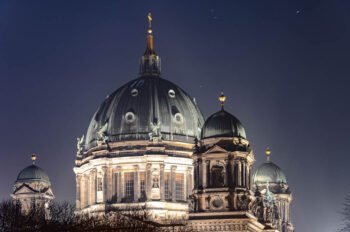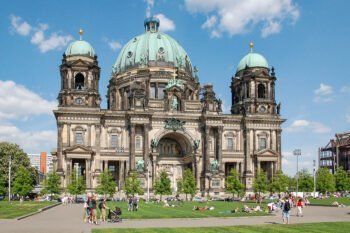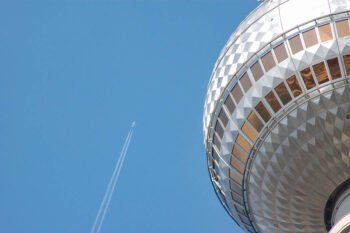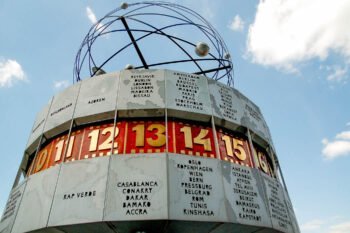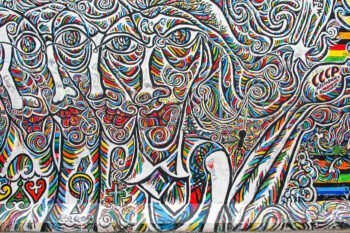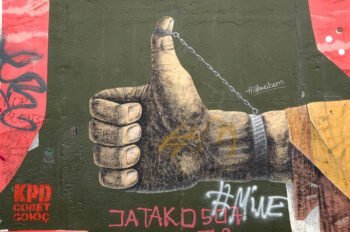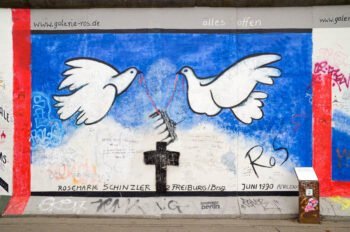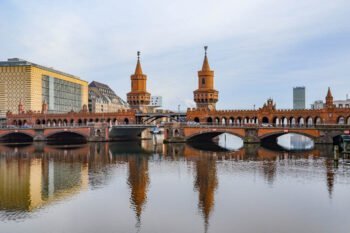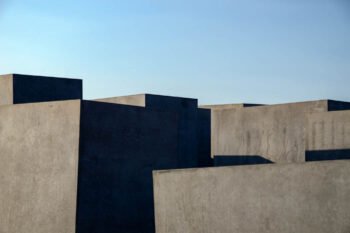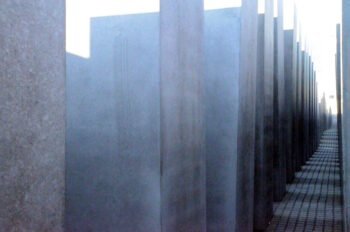What to see in Berlin?
The 22 best sights you have to see in Berlin
Latest update: March 6, 2024
In a nutshell: Our top highlights in Berlin
- Berlin’s top highlights you should not miss: the Brandenburg Gate, Reichstag, Berlin Cathedral, Checkpoint Charlie, and East Side Gallery.
- And for all the culture lovers out there, don’t skip the Museum Island. It’s a must-see!
- Our personal favorite is a walk through the neighborhoods, like Kreuzberg, Schöneberg, and Prenzlauer Berg. You’ll get a real feel for the city.
- And for the best view in town, head to the TV Tower or Panorama Point.
That’s our top 4 highlights of Berlin, but if you’re looking for more, keep on reading! You’ll get a full rundown of the 22 best sights in Berlin and some practical travel tips.
General tips: How to best visit the sights of Berlin
Before we start in on the attractions, we have a few tips that will make your sightseeing tour through Berlin easier.
#1 Traveling with public transportation
You’ll get around Berlin best by bus and train. The public transportation here is considered among the best in the world, and is actually much better than its reputation would have you think.
All of the attractions are found near an U-Bahn (subway) or S-Bahn (suburban train) station, so you can easily leave your car behind. In general, it’s difficult to find a free parking space in the inner ring of Berlin, let alone a cost free one.
Definitely pay attention then to finding accommodation that’s close by to an U-Bahn or S-Bahn station. You’ll find out which city neighborhoods and which hotels are particularly worthwhile in this article:
The best areas to stay in Berlin
Alternatively to U-Bahns and the like, there are also a variety of sharing providers, from which you can rent cars, mopeds, e-scooters or bikes through apps.
#2 Buy the Berlin Welcome Card
If you intend to visit museums or other ticketed highlights, it’s worth it for you to get the Berlin Welcome Card.
It comes in a few varieties and it enables you to freely go by bus or train, and it allows you to get a 20-50% rebate off over 200 attractions.
There’s a Berlin Welcome Card for 48 or 72 hours, or for 4, 5, or 6 days, and you can comfortably order them online:
#3 Do a guided tour
Guided tours are always worth it when you want to see as many sights as possible in a short time and also want to learn some interesting background information. You’ll do that best with a local guide.
There are many interesting tours through Berlin, for example tours about special themes, culinary tours or the totally classic sight-seeing tours.
Here are a few of the most interesting:
Sightseeing tour by foot of the most important attractions
Small group tour about the Cold War and Third Reich
Hop-On/Hop-Off bus tour with live commentary
If you’re instead on the search for some tours that are more unusual and that take you off the tourist’s typical beaten path, then take a look at our article:
Unusual tours and guided tours through Berlin
But enough with the introduction. Now we’ll get to the 22 best attractions in Berlin.
What to see in Berlin: Our highlights on a map
For a first overview of the city, we’ve put together the sights on a map for you.
You can also save the map onto your computer or phone:
Click here to download our Berlin sights map as a PDF.
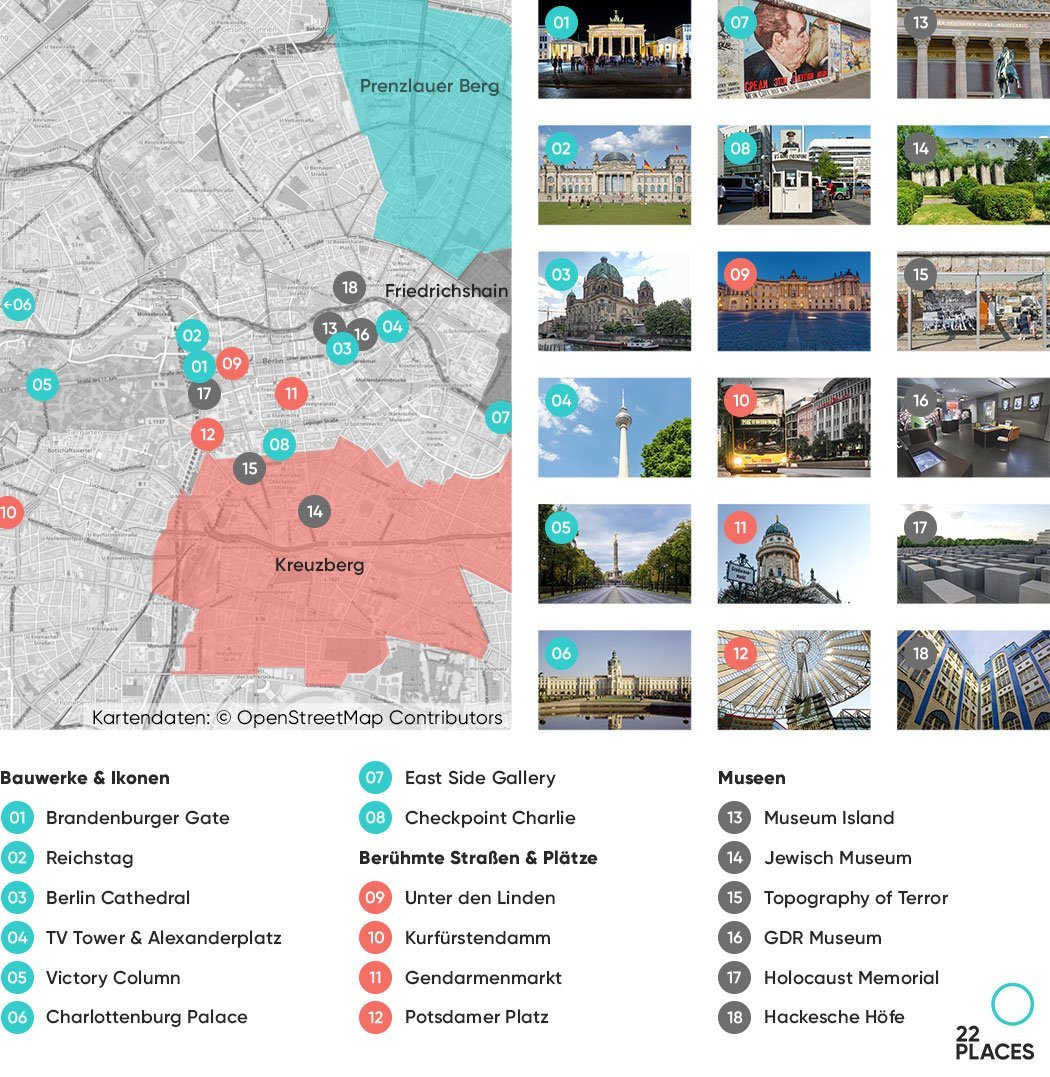
#1 Brandenburg Gate
As the iconic landmark of Berlin, no tourist can miss the Brandenburg Gate. No other structure is as closely bound to the history of the city as the Brandenburg Gate.
In fact, there used to be a total of 18 city gates, but just the one survived.
Right in front of the Brandenburg Gate you’ll find the always well visited Pariser Platz, where the famous Unter den Linden boulevard ends.
Just behind the Brandenburg Gate awaits already the next attraction.
If you go straight out of the Gate, the Straße des 17. Juni (Road of the 17th of June) leads you directly to the Victory Column (Siegessäule). On the left of the gate you’ll find the Memorial to the Murdered Jews of Europe (Holocaust-Mahnmal), Tiergarten and Potsdamer Platz, and if you go to the right, you’re just a few minutes away from the Reichstag.
The Brandenburg Gate is definitely then a good starting point for a sightseeing tour of the city.
free
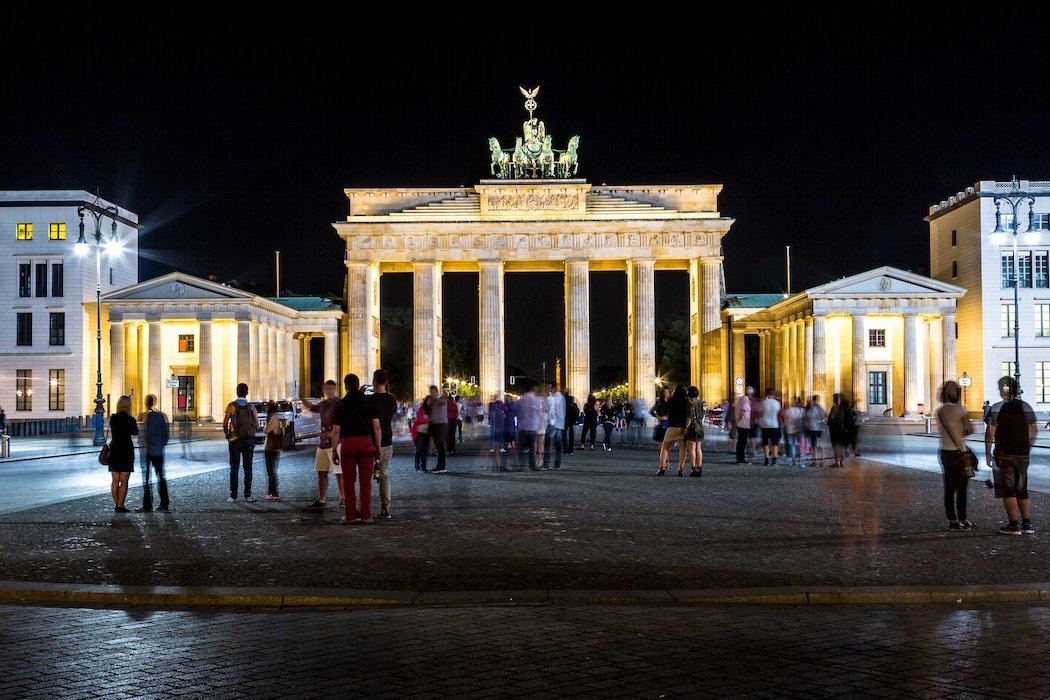
#2 Reichstag
German politics come to life in the building of the Reichstag, surrounded by the Tiergarten and the Spree river. Not only are you close to political happenings here, but you’re also in the midst of a fascinating architectural work.
Belonging to the Reichstag is a 23 meter high and 40 meter wide glass dome, which you can visit for free. In this dome, you can also find a rooftop restaurant.
Attention: You can only visit the dome with a reservation. You can do this online on the German Bundestag website. Alternatively, you can also register on-site at the service center of the Visitors’ Service, but that would only work if there’s still free spaces available. We would definitely recommend then that you make a reservation beforehand.
On the rooftop terrace, there’s a free audio guide for anyone who wishes, which is 20 minutes long and shares information about the German Reichstag building, the dome and the work of Parliament.
Alternatively, you can also book a guided tour through the dome and the government quarter. The reservation for the Reichstag dome happens directly with this:
To the guided tour through the government quarter and Reichstag dome
Admission to the dome can in some cases be cancelled on short notice, and then even visitors who have a reservation can’t enter anymore. This can happen due to either bad weather, security or parliamentary events.
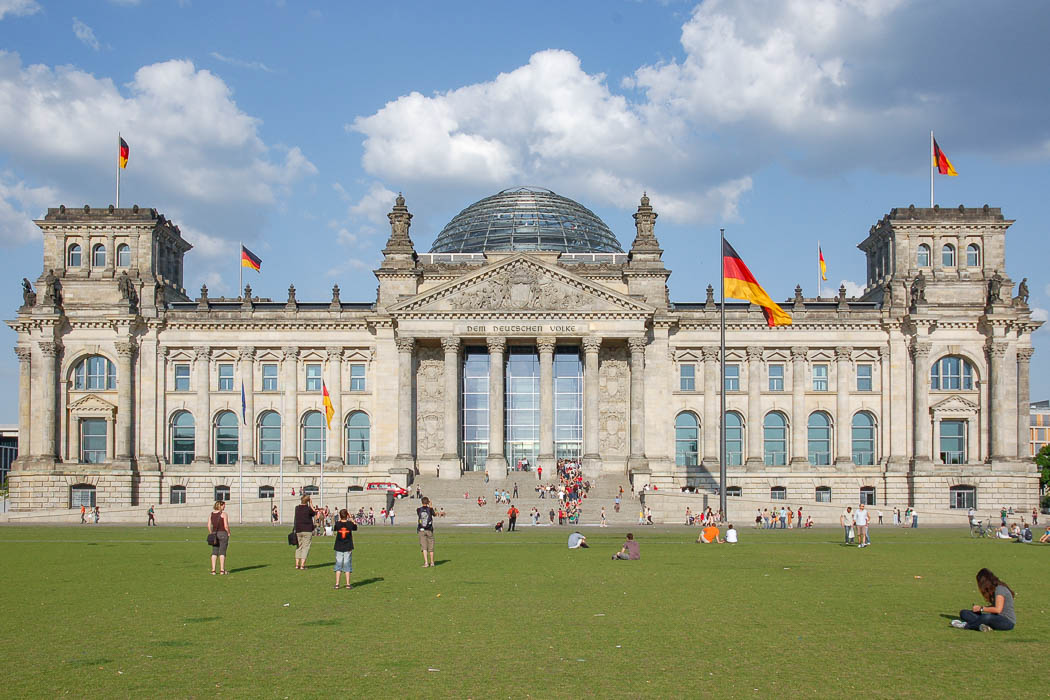
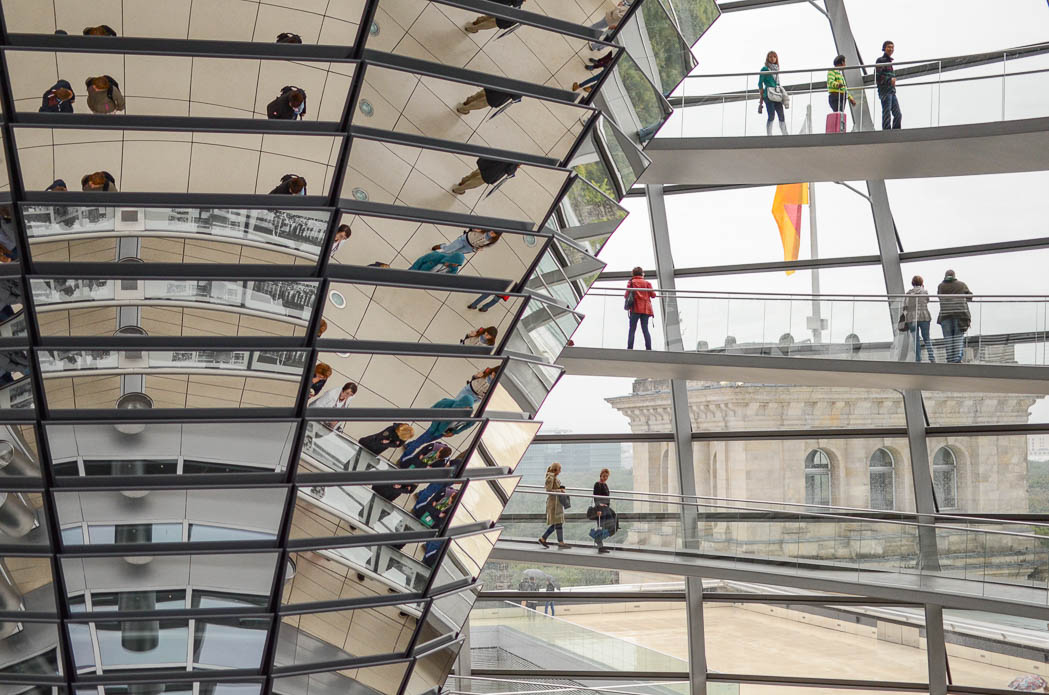
#3 The Berlin Cathedral
The Berlin Cathedral (Berliner Dom) can be found on Museum Island (Museuminsel). Some say that it’s one of the most beautiful cathedrals in Germany.
Entrance costs 7 euros and can be paid on-site. You’re allowed to climb into the dome, where you can expect to see another gorgeous view of Berlin.
The walls, ceiling and windows of the cathedral are splendidly decorated in the Baroque style, with marble elements, mosaics and four huge organs.
The Hohenzollern Crypt can be found in the basement, which is one of the most important burial places of a dynasty in Europe. Here you can see the ornate sarcophagi of Berlin’s royal family from the 17th to 20th century.
Directly in front of the cathedral is the Lustgarten, with its romantic fountain. This is a nice place to relax and sit on the grass, by the way.
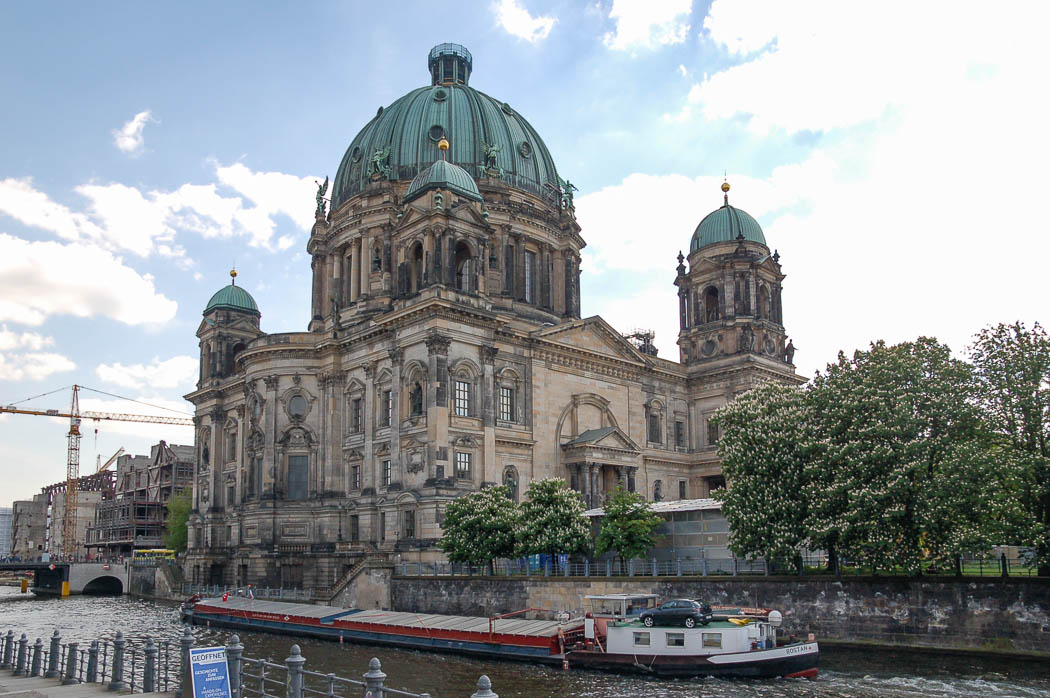
#4 TV Tower and Alexanderplatz
High, higher, Berlin TV Tower! The TV tower, with its height of 368 meters, is actually the tallest construction in Germany at this time. Some claim that Berliners lovingly call the tower the Imposing Club, the Show-off Stalk, St. Walter, or Tele-asparagus. But to be honest, no one does that.
The Fernsehturm is one of the most distinctive highlights of Berlin’s skyline, and the view from the top belongs to the best that Berlin has to offer. At 203 meters high on the tower, you can grab a drink or snack at the Bar 203. If you want to eat at the revolving restaurant “Sphere,” you need an extra ticket, through which you’ll also get a table reservation.
You can get tickets online or on-site. Because the Fernsehturm is one of the most popular attractions in Berlin, you can only rarely just walk in. Instead, you’ll be given a time slot on-site, which is usually for several hours later.
So, it’s worth it to book a ticket online and avoid the wait.
Going up the tower with an online ticket costs 24.50 euros per person, and a ticket on-site costs 21.50 euros per person.
To a ticket without the wait for the Berlin Fernsehturm.
To a ticket without the wait for the Berlin Fernsehturm, with windows eating at the revolving restaurant.
Attention: Strollers, large bags and luggage are not allowed in due to security reasons. Wheelchair users and people using walkers are unfortunately not allowed up the tower for the same reasons.
Right at the Fernsehturm you can find the enormous Alexanderplatz, which Berliners call Alex for short. Many find it really ugly, but at a closer glance, it’s not at all.
All around Alexanderplatz are some fascinating examples of GDR architecture. The most well-known is the World Clock, where you can read the local time at several places around the world.
The only abysmally ugly building is the Alexa shopping center, which is luckily a bit hidden away on the edge of Alex.
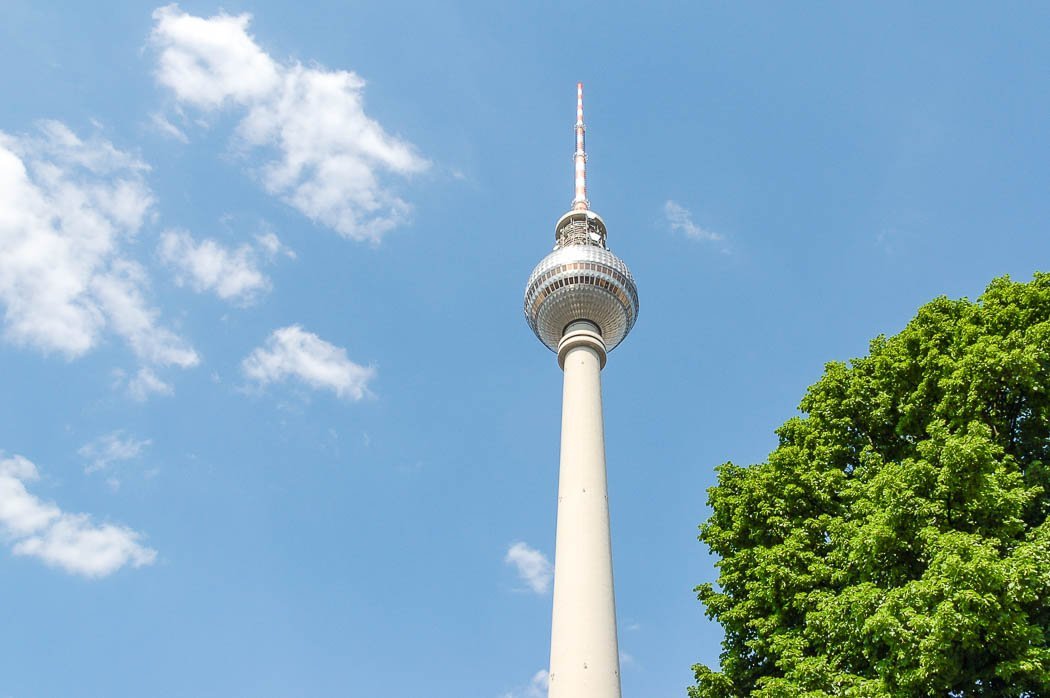
#5 The Victory Column
A lavish pedestal, a tall column and a crowned Victoria on the top – that’s the Berlin Victory Column (die Berliner Siegessäule). Berliners also call the statue “Goldelse,” or “Golden Else,” and in comparison to the so-called nicknames of the Fernsehturm, that’s really true.
The Victory Column is on of the most significant national monuments of Germany.
It’s found in the middle of the “Großer Stern” (The Great Star). The Großer Stern is a centrally located square in the middle of the Tiergarten. It’s surrounded by a busy traffic circle and connects some of the most important streets of Berlin together.
To get to the Victory Column, you’ll go through one of four pedestrian underpasses, which will safely take you under the streets to the monument.
For only 3 euros, you can go into the structure and climb up a spiral staircase, where another fantastic view of Berlin awaits you.
Attention: Inside the column it’s very narrow, and so it’s not for people with claustrophobia.

#6 Charlottenburg Palace
Charlottenburg Palace goes back to the time of the Prussians and stands as the biggest and most magnificent palace of Berlin. Even the palace garden, in the English style and with an adjoining nature park, is itself really worth seeing.
Within the Palace facilities, you can visit the Old Palace, the New Wing, the Mausoleum of Queen Louise, the Belvedere and the New Pavilion.
The Old Palace is the largest main building. The New Wing is an addition built by Queen Louise and King Frederick III for their personal apartments.
The Belvedere is a garden house with a view of the Spree and a large porcelain collection. An art exhibit is housed in the New Pavilion, showcasing paintings from the 18th and 19th century.
You can visit all parts of the palace for 17 euros per person, or you can also visit only the Old Palace or New Wing for 12 and 10 euros respectively.
The Charlottenburg Palace is also an event space. Orchestras occasionally play in the Orangerie, and a Christmas market also takes place there every year.
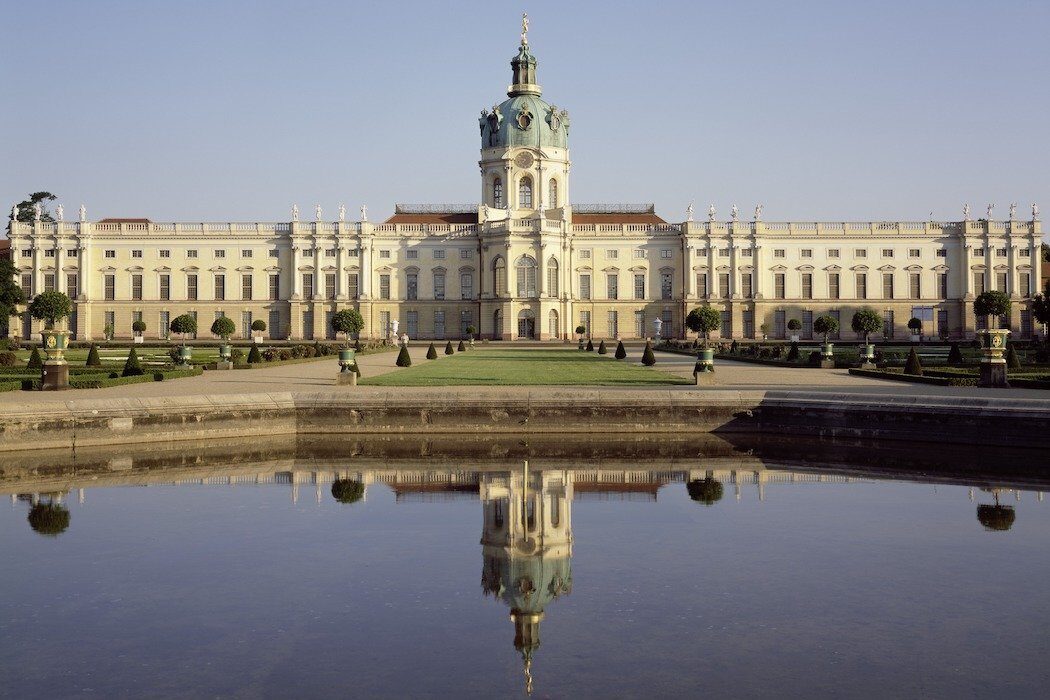
#7 East Side Gallery and Oberbaum Bridge
The East Side Gallery is an open air monument and is today one of the most famous sights of Berlin.
Right on the Spree, on the border between Friedrichshain and Kreuzberg, you can find the longest still standing section of the Berlin Wall. On the west side of the wall, a number of artists have immortalized themselves, creating a 1.3 kilometer long open-air gallery.
Probably the most well known artwork on the East Side Gallery is the fraternal kiss (der Bruderkuss). It shows the heads of state from the Soviet Union and the GDR, Leonid Breschnew and Erich Honecker, in a brotherly embrace.
The very photogenic Oberbaum Bridge is found on the south end of the East Side Gallery. From the banks of the Spree, on the river’s edge of the East Side Gallery, you’ll have a gorgeous view of the most beautiful bridge in Berlin.
Our tip: The Oberbaum Bridge is particularly nice to photograph during the late afternoon or during sunset. The sun falls against the bricks of the bridge, and the water of the Spree turns into a beautiful dark blue.
free

#8 Checkpoint Charlie
Checkpoint Charlie remembers the period of the Occupation Zone and the Cold War. At the same time, it’s also probably the most touristy place in Berlin, full of souvenir stores and masses of people, day or night. A detour here is still worth it though, because Checkpoint Charlie is still a historically significant place in the city.
It’s one of the most important border crossings from the time of the German Division.
Much did not survive the transition, and the small control house is a new construction from the year 2000. Around Checkpoint Charlie you’ll now find actors dressed up as American soldiers, who you can take a photo memento with for a few euros.
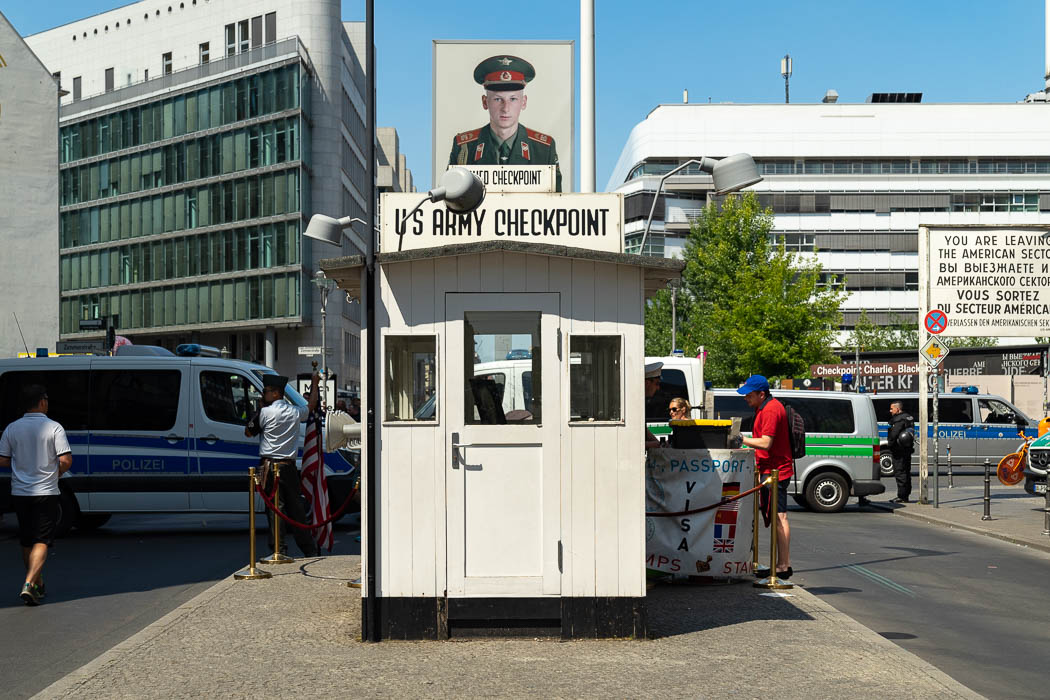
#9 Under den Linden
Unter den Linden is a famous, 1.5 kilometer long street in Berlin’s center. It connects the Berlin Cathedral with the Brandenburg Gate, and as you stroll along it, you’ll pass by more sights of the city.
Among other things, you’ll find the just recently rebuilt Berlin Palace, Museum Island, Humboldt University, the State Opera, the Neue Wache, multiple embassies, and the German History Museum. All the way at the end is Pariser Platz and the Brandenburg Gate.
It’s also worth a visit to the Bebelplatz in front of the State Opera. During Nazi times, book burnings took place here, which is remembered there today.
By the way, Unter den Linden crosses, among other streets, Friedrichstraße, one of the most well known shopping streets of Berlin.
free
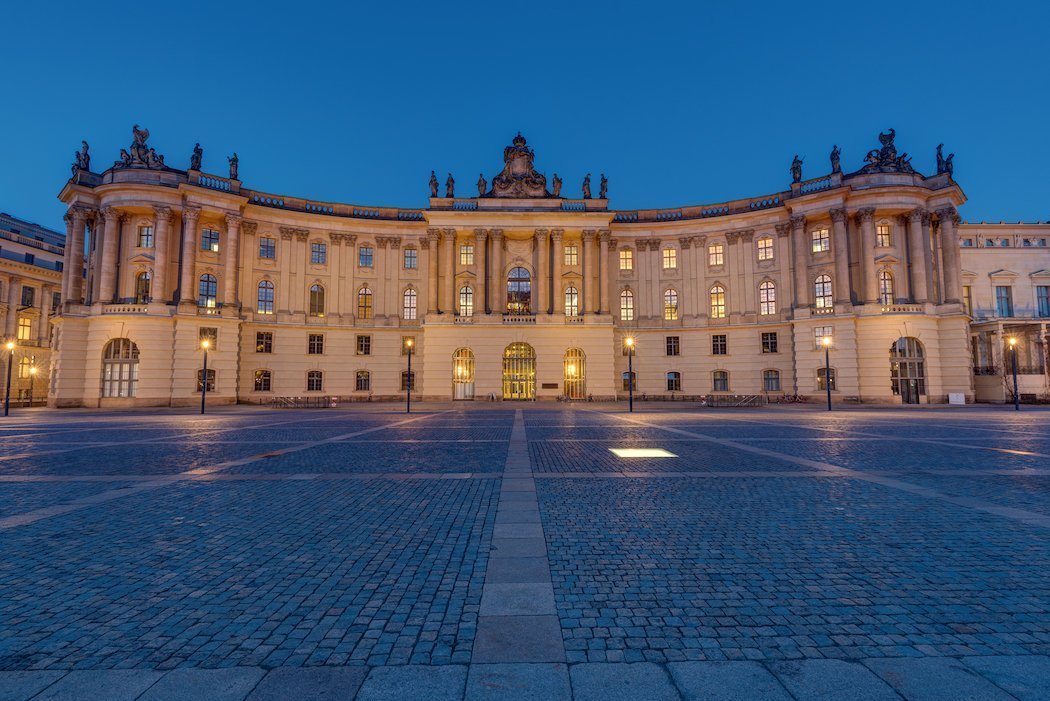
#10 Kurfürstendamm
Kurfürstendamm, which Berliners call Ku’damm for short, is the most well known shopping street of Berlin. Here you’ll find one store after the next.
From exclusive designer brands to more affordable stores like H&M, everything’s here that a shopper could dream of.
The Gedächtniskirche (Kaiser Wilhelm Memorial Church) is worth seeing, which is found directly on Ku’damm. The half-destroyed church reminds us of dark times and today serves as a memorial.
After the Gedächtniskirche, Kurfürstendamm turns into Tauentzienstraße. On this street stands the most famous department store in Germany and the largest of continental Europe: Kaufhaus des Westens, KaDeWe for short. In KaDeWe you’ll find over 60,000 square meters of an enormous selection of fashion, cosmetics, homeware, and a top floor full of delicious food and treats.
free
#11 Gendarmenmarkt
Gendarmenmarkt is one of the most beautiful squares in Berlin.
The gorgeously designed square is made up of three monumental buildings, each centuries old: the Deutscher Dom, Französischen Dom, and the Concert House.
There are numerous fancy restaurants and hotels in and around the square, and events regularly take place in the square itself. Among them, for example, are the Gendarmenmarkt Christmas Market and the Classic Open Air concert series, which happens during the summer.
Our tip: The square is always beautiful, but it’s particularly striking in the evening when all the buildings are illuminated. Besides that, there’s also way less going on then.
free
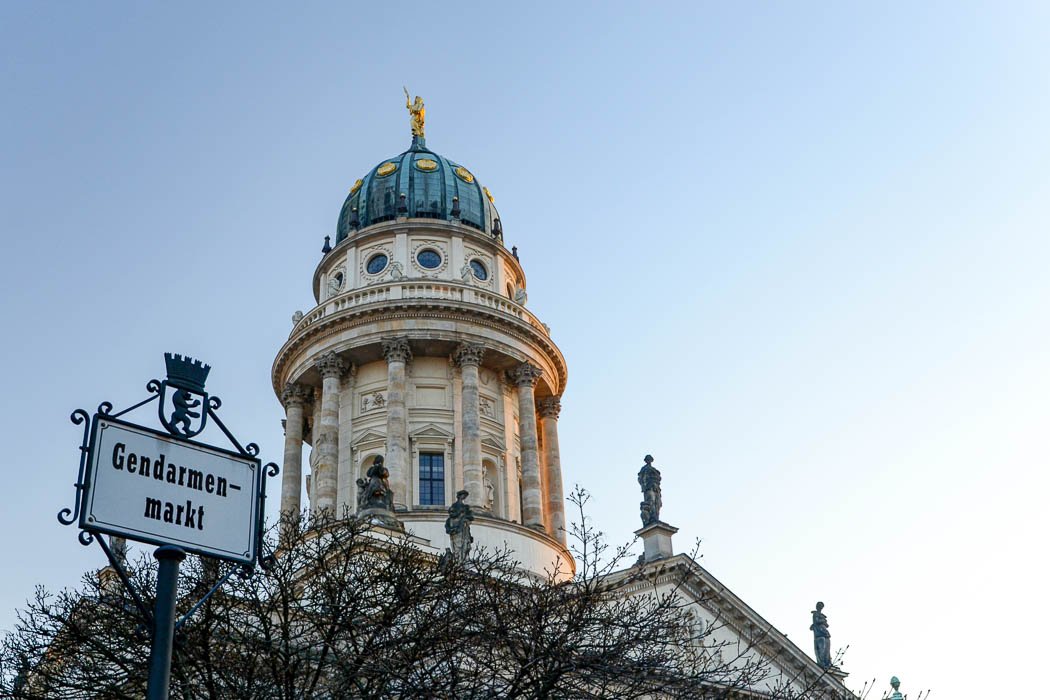
#12 Potsdamer Platz
Another highlight for many of Berlin’s visitors is Potsdamer Platz. You’ll not only find an important point of connection for Berlin’s S-Bahn, but also quite a few skyscrapers around this square.
To compare it with cities like New York is of course silly, but you don’t see something like it so often in Germany.
Potsdamer Platz was a border area during the time of Germany’s division. In the 90s, major construction and transformation projects began, and the square was for a long time the largest construction zone in Europe.
Particularly interesting to see is the Sony Center, with its spectacular roof structure.
Despite all of its modernity, Potsdamer Platz also has a monument, which remembers old times: the first traffic light of Germany and one of the first in Europe. It’s been here already since 1924.
A visit to the Kollhoff-Towers is also worthwhile. On the 24th and 25th stories is the Panoramapunkt, an observation deck with a cafe, the Panoramacafé, which is in the style of the 30s. You’ll reach it with the fastest elevator in Europe.
This elevator, though, always has a waiting line, but with an online ticket you can go directly up.
To the ticket for the Berlin Panoramapunkt that skips the line.
free
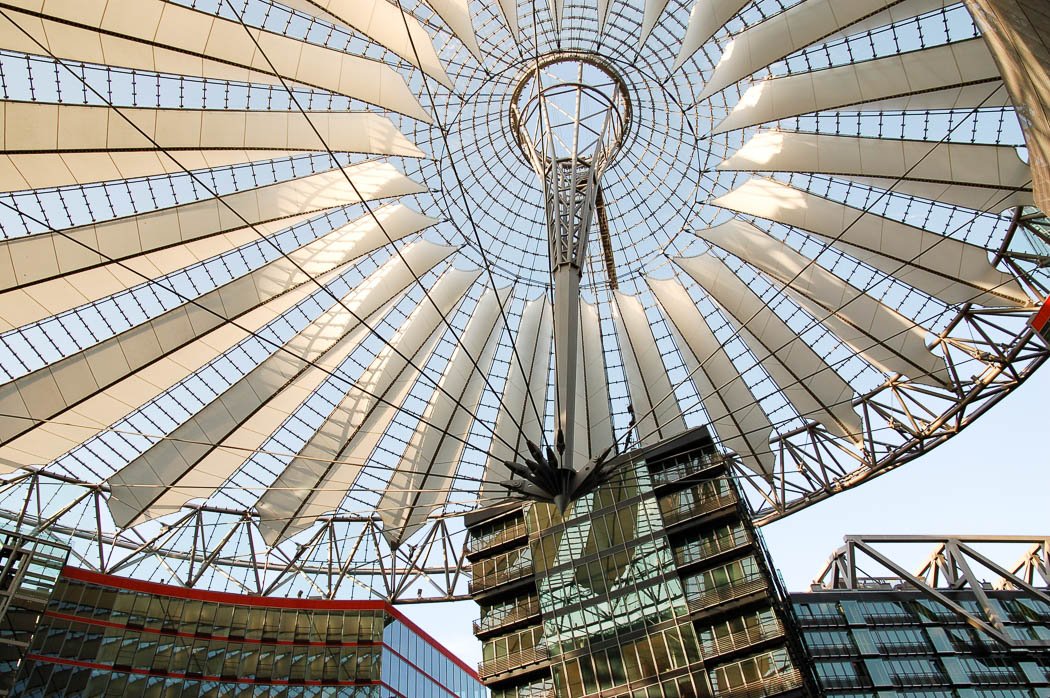
#13 Museum Island
If you’re fascinated by culture, art and history, then you can easily spend a few days on Museum Island. We’re talking about the most important museums complex in Europe, Museum Island, which of course also belongs to the UNESCO World Heritage Sites.
Here, you’ll find five museums that are all very worth the visit: the Altes Museum, the Neue Museum, the Alte Nationalgalerie, the Bode-Museum, and the Pergamonmuseum.

Altes Museum
The Altes Museum (Old Museum) is dedicated to the art and culture of the ancient Greeks, as well as the Etruscans and Romans. Here you can view, among other things, sculptures, weaponry, gold jewelry and silver treasures from the aforementioned cultures.
To the ticket for Altes Museum
Neues Museum
A particularly interesting exhibit is kept in the Neues Museum (New Museum), namely the Bust of Nefertiti. In addition, the New Museum includes the Egyptian Museum, Papyrus Collection, as well as exhibits on the Pre- and Early History of humans.
To the ticket for Neues Museum
Alte Nationalgalerie
The Alte Nationalgalerie (Old National Gallery) exhibits first and foremost sculptures and paintings. Among other things, you’ll find paintings by Kasper David Friedrich and Ernst Ludwig Kirchner.
To the ticket for Alte Nationalgalerie
Bode-Museum
The Bode-Museum houses artifacts of Byzantine art, Italian and German sculptures, coin collections and some paintings.
Pergamonmuseum
The Pergamonmuseum is made up of three wings and houses an Antiquity Collection, the Middle East Museum, and the Islamic Art Museum. The huge Pergamon Altar, the Market Gate of Miletus and the Ishtar Gate are highlights of the museum.
To the ticket for the Pergamonmuseum
Our tip: There’s a practical Day-Ticket for Museum Island that costs 18.90 euros, which allows you to visit all the museums on the island in one day.
To the Ticket for all exhibitions on Museum Island (3 days)
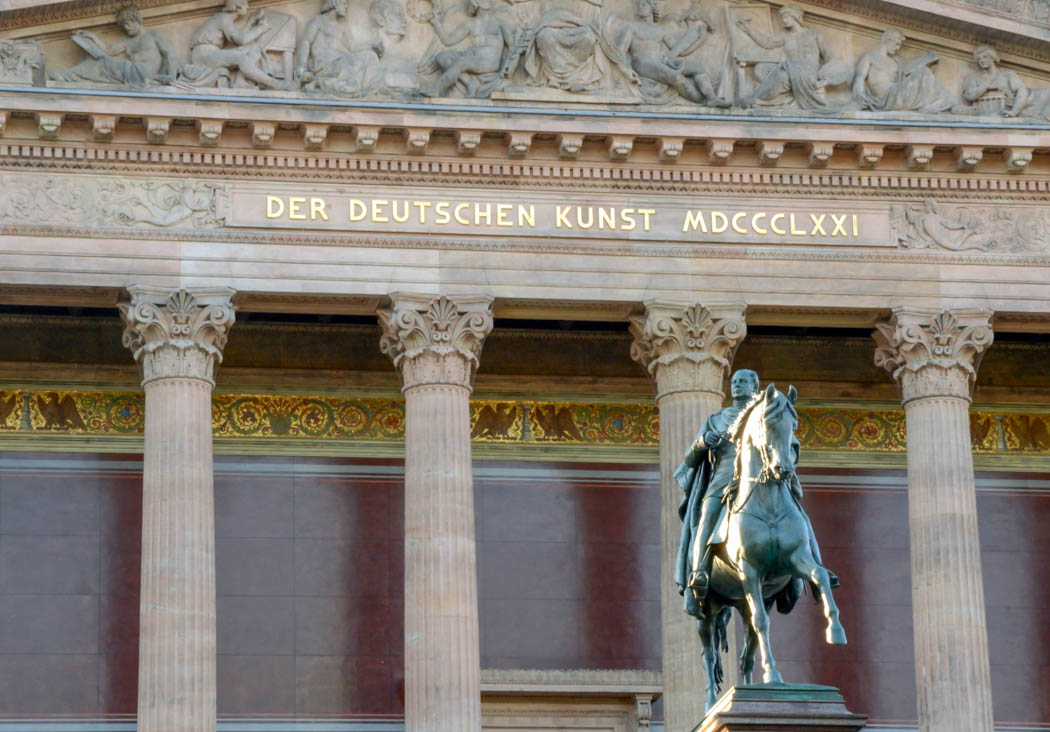
#14 Jewish Museum
The Jewish Museum is found in Kreuzberg and is the biggest Jewish museum in Europe. The focus of the museum is Jewish history and culture, such as migration and diversity in Germany.
In the museum, you can view exhibits and collections or can take part in events. The extensive offerings also include guided tours, workshops, lectures, concerts and readings.
During the visit, you’ll continuously encounter the era of the National Socialists and their impact on Jewish life in Germany, Europe and Israel.
The museum is not only interesting because of its content, but also because of its extraordinary architecture by Daniel Libeskind and the beautiful museum garden.
Our tip: the museum is really big, so you should give yourself at least three hours there.
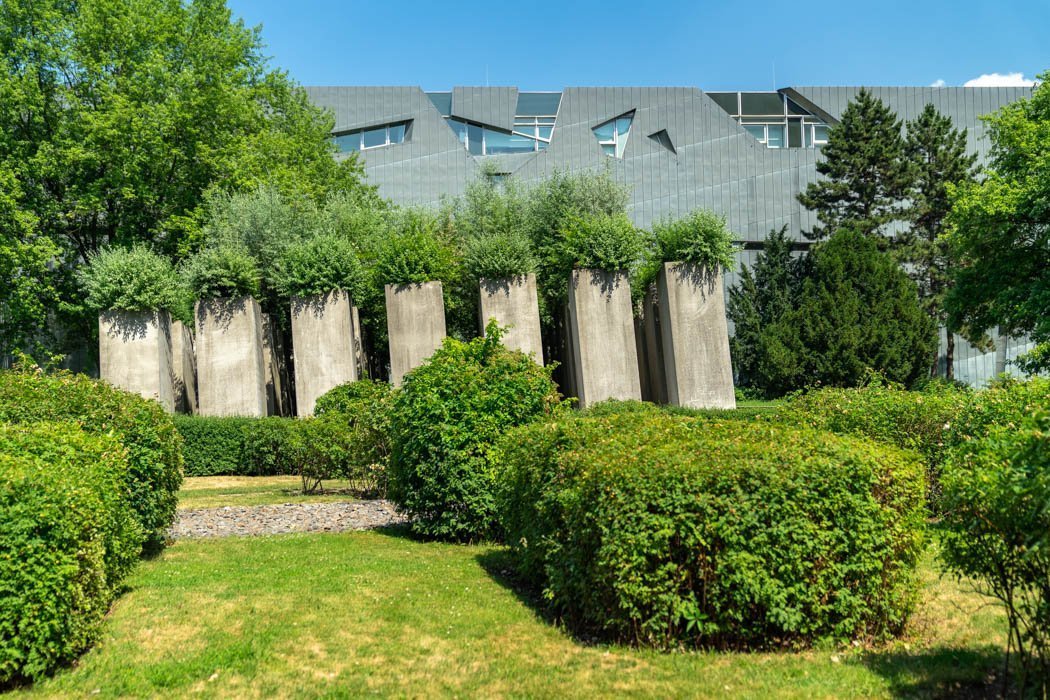
#15 Topography of Terror
The Topography of Terror (Die Topographie des Terrors) is an exhibition project that you can visit for no cost. It’s dedicated to the documentation and processing of the terrors of National Socialism in Germany, with a focus on the period from 1933 to 1945.
Before, the headquarters of the Secret State Police (Gestapo) were found exactly where the exhibition stands today, and other important Nazi facilities were located nearby, which gives the project even more significance.
The exhibition contains an indoor and outdoor area. In the museum, there are original photos, posters and other documents from the Nazi period displayed, which provoke visitors to think about the horrors of that time.
In addition to two permanent exhibitions, you can go on an informative tour. There’s also always temporary exhibits going on.
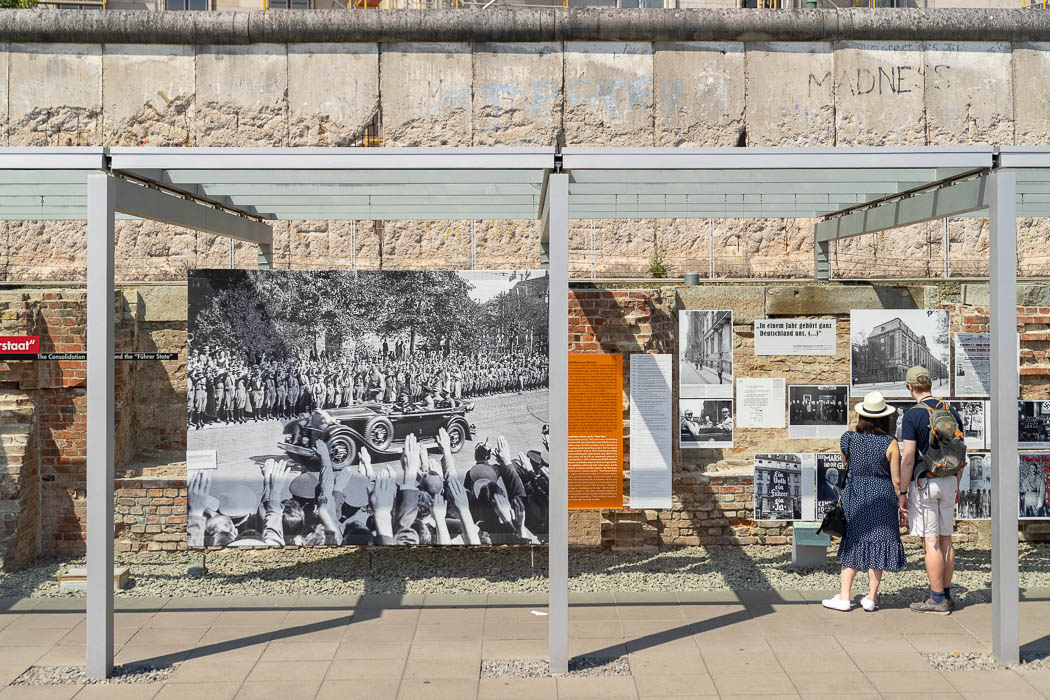
#16 GDR Museum
Directly across from Museum Island is the interactive GDR Museum, which shows life and everyday culture from the GDR in a permanent exhibit.
This period, which lasted around 40 years, is vividly and descriptively presented, so you can imagine yourself in that era really well.
Above all, the interactive elements of the museum make it an experience for young and old alike.
For example, you can print out old recipes in an original GDR kitchen set in a replicated prefabricated building, so that you can make the recipes at home. Or, you can sit in an original Trabant and take a virtual ride through East Berlin.
Our tip: This museum is always well visited, and the wait line is long. With the online ticket, you can get in without the wait.
To the ticket for the GDR Museum
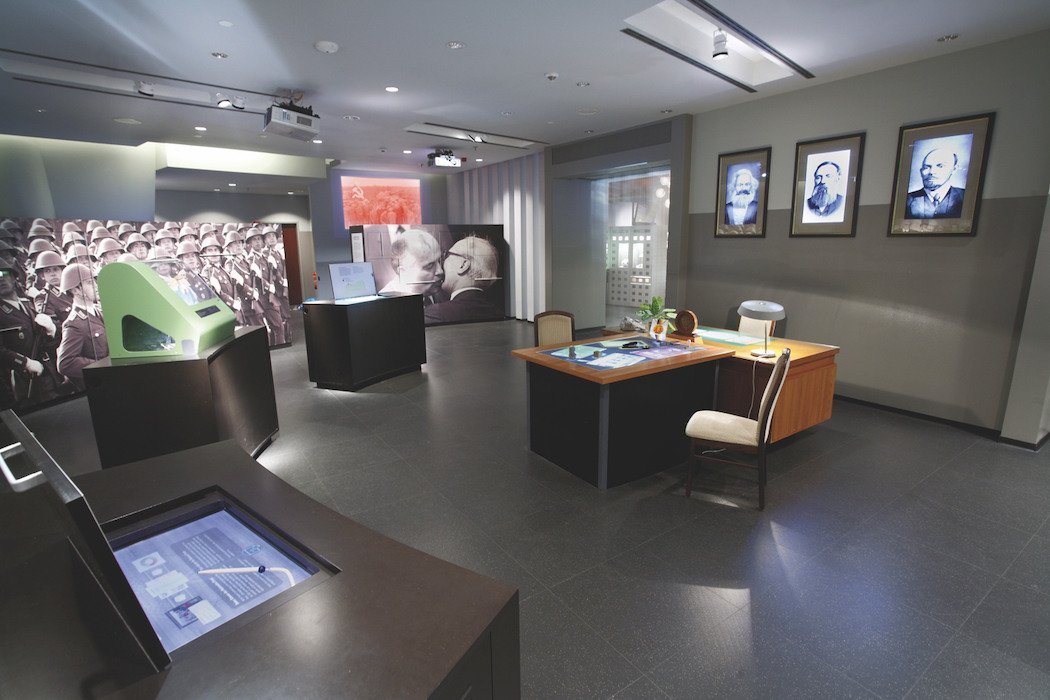
#17 Memorial to the Murdered Jews of Europe
Berlin played a central role during the time of National Socialism, so in the capital you’ll find probably the most important memorial for the Jews of Europe who were murdered by the Nazis.
The memorial, which lies between the Brandenburg Gate and Potsdamer Platz, is a wave-shaped, 19,000 square meter large field, on which 2,711 rectangular concrete stelae stand. The field is accessible from all sides, and through its abstract forms and grey tones, it is meant to reflect the powerlessness and despair of European Jews during that time.
Beneath the field of concrete slabs, there is an information center, which is an underground building reachable by stairs. There, information is provided across a large presentation area about the persecution and murder of European Jews.
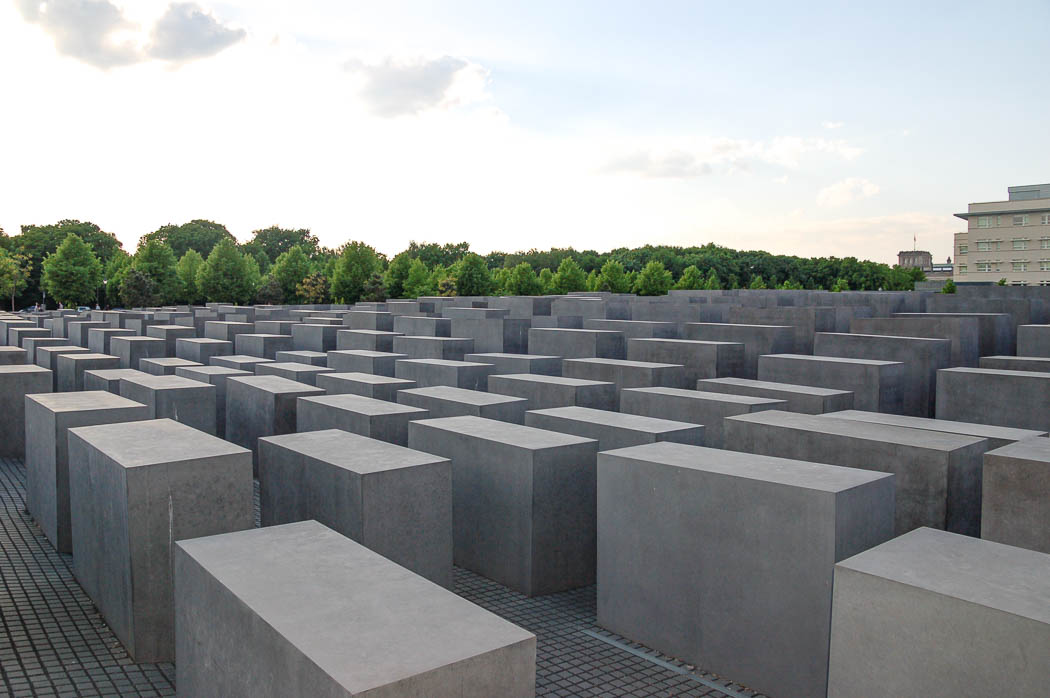
#18 Hackesche Höfe
The Hackesche Höfe are found in the district of Mitte, around the square that goes by the same name, Hackescher Markt.
The Hackesche Höfe are a total of eight unique, interconnected inner courtyards, where there are a number of shops, ateliers and cafes to discover.
There are two entrances to the courtyards, one on Sophienstraße and the other on Rosenthaler Straße. A stroll through the Hackeschen Höfe is always a must for us on any visit to Berlin.
free
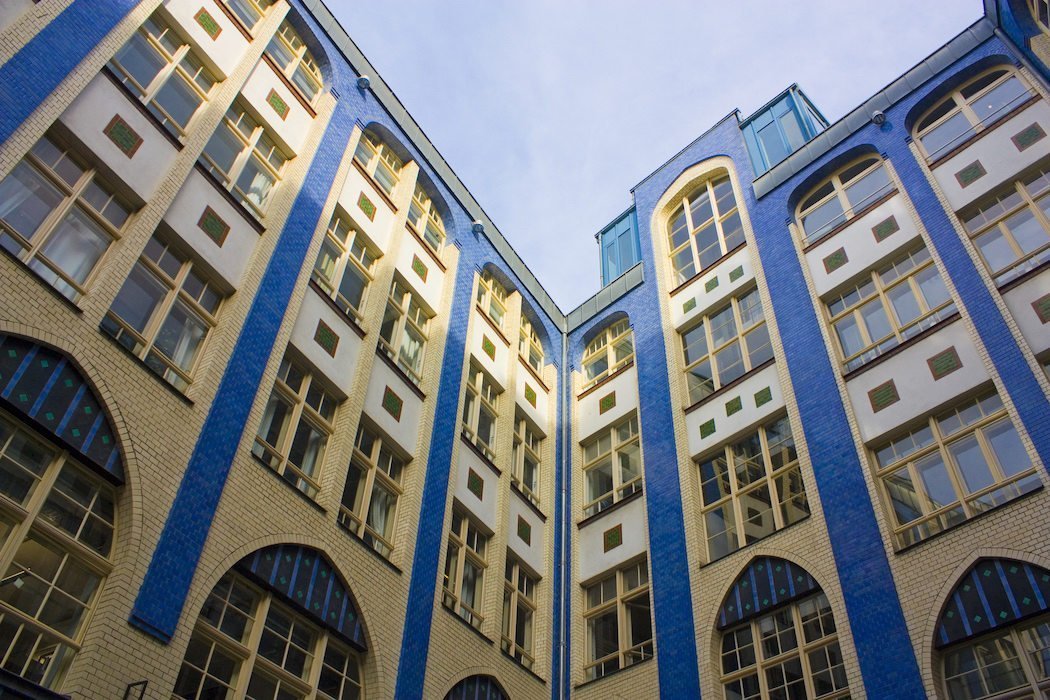
#19 Kreuzberg
We’re often asked, “which sights in Berlin do you have to have seen?” Of course, you have to see the classics like the Brandenburg Gate. But what really makes Berlin is its neighborhoods.
We always suggest that you simply take a wander through some neighborhoods. For us, that’s actually the highlight of Berlin. One of these neighborhoods is Kreuzberg.
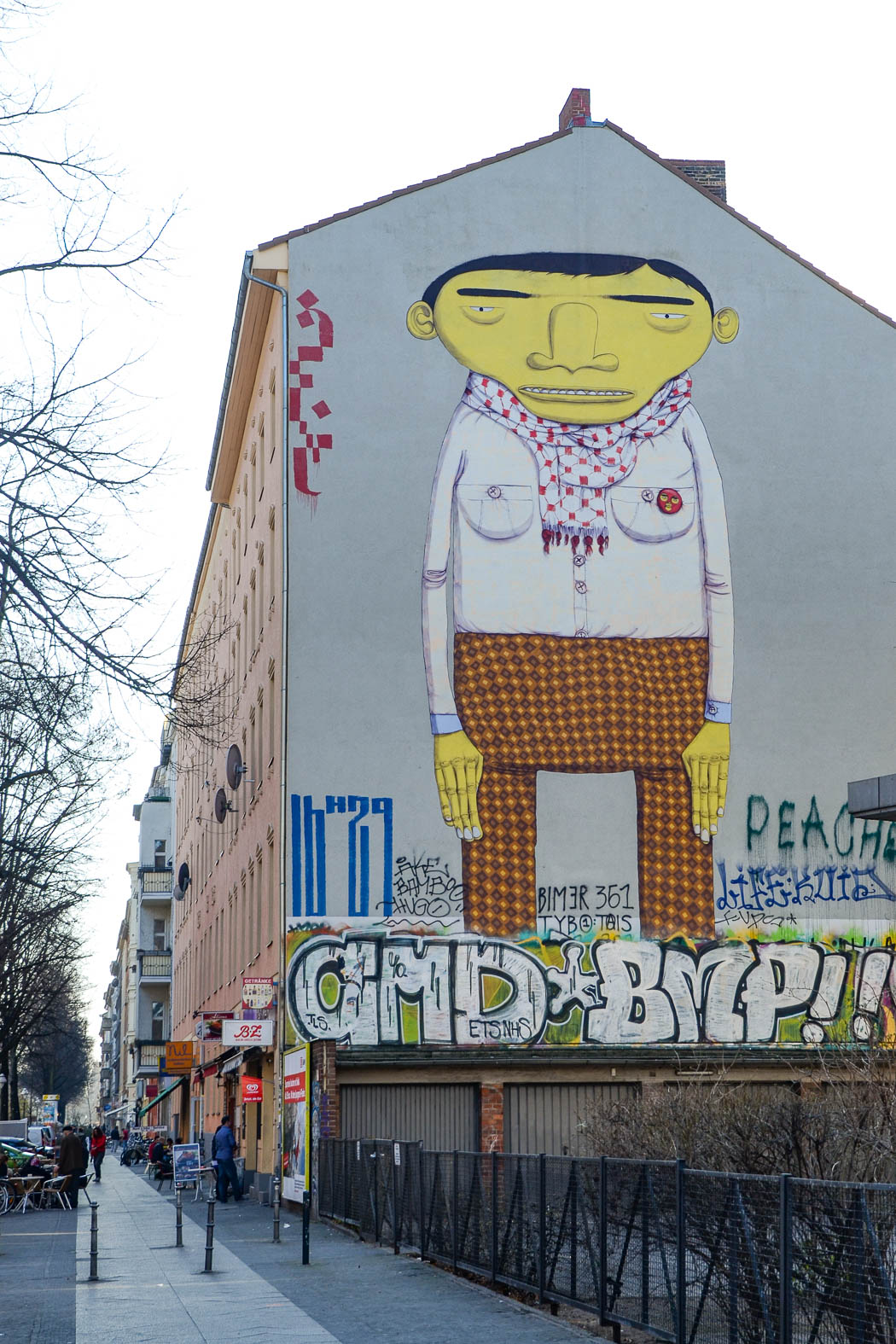
Kreuzberg is a popular, notorious district of Berlin and is celebrated by many as the coolest area of the city.
For a long time, Kreuzberg was a rather neglected quarter, home to many guest-workers and the alternative scene of West Berlin.
Kreuzberg is as alternative as ever, even though many houses today have gotten spruced up, and the rent prices aren’t affordable anymore for many long-time Kreuzberg residents.
The crowd here is predominantly young, international and alternative – still Kreuzberg! Between Oranienstraße, Mariannenplatz and Bergmannkiez you’ll quickly find a colorful mix of cultures, the likes of which exists barely anywhere else in Germany.
Particularly worth a visit is Markthalle Neun, where you can get some delicious food. Besides that, you’ll find some of the hippest clubs of the city in Kreuzberg.
You can of course do Kreuzberg on your own. But if you want to learn a little more about its background, then you can do that with a local guide.
To a guided tour through Kreuzberg.
#20 Prenzlauer Berg
Another great district to see in Berlin is Prenzlauer Berg, Prenzlberg for short, which is in the northeast of Berlin.
The district directly borders Mitte and so it’s very centrally located. Prenzlauer Berg was a typical working class area during the time of East Berlin, but it was also a cultural and alternative center. After the turn and return to unity, the cheap rent of the run down old buildings attracted many students, artists and alternatives, who had long characterized the area.
In the meantime, the creatives have almost entirely given way to young families and those with higher incomes. The old buildings were lavishly renovated and there are now many restaurants and small shops.
In Prenzlauer Berg, there are over 300 buildings under historic preservation protection. Particularly interesting here are the Kastanienallee, Kollwitzplatz and Helmholtzplatz, with their many restaurants and bars.
Another gem is the Kulturbrauerei. It’s set in a decommissioned brewery from the 19th century that today houses many cafes, shops, a theater and a cinema. In December, there’s also one of the nicest Christmas markets in Berlin here.
Our tip: In case you visit Prenzlauer Berg on a Sunday, you should definitely swing by Mauerpark. The weekly flea market takes place there, and there’s always a bunch of performance artists and musicians bustling around the park’s meadow. One of the absolute highlights is Mauerpark Karaoke. Simply follow the noise, and you’ll discover it.
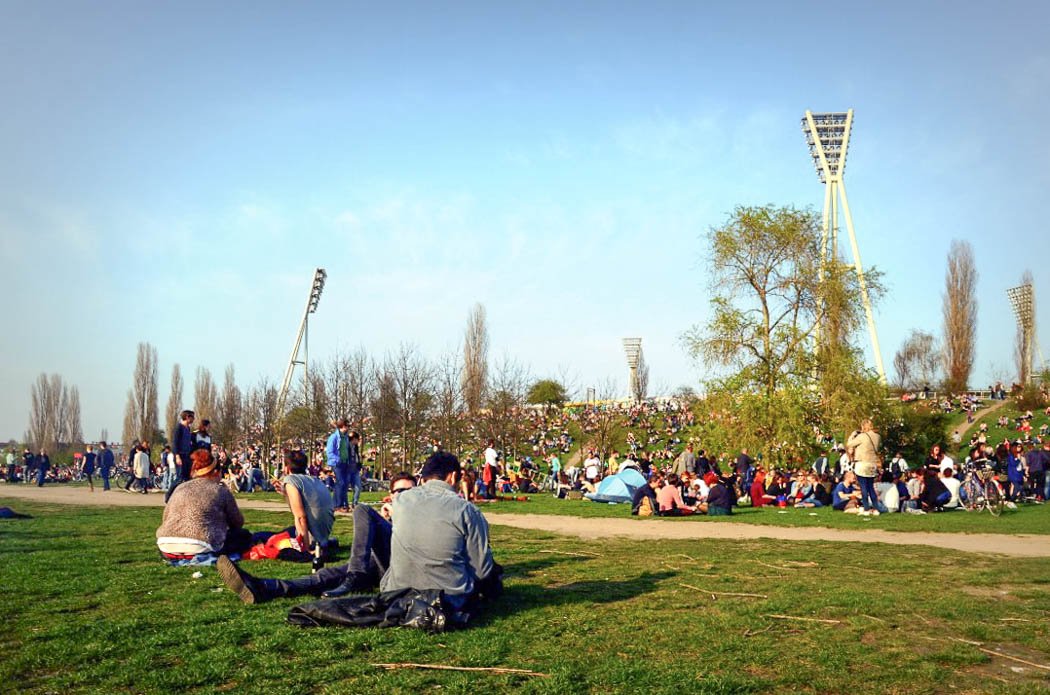
#21 Friedrichshain
Friedrichshain, like Kreuzberg, is another quarter of the city with an alternative personality, with many bars, restaurants, flea markets and nightclubs.
Some central focal points are Simon-Dach-Kiez and Boxhagener Platz.
Friedrichshain is also home to the Berghain, probably the most infamous techno club in the world. The East Side Gallery is found in this district too. You’ll also find some interesting East German architecture, above all on Karl-Marx-Allee, where it looks like time stood still.
For alternative art and culture, you should see the RAW-Gelände in Friedrichshain. The focus here is on intercultural projects, exhibitions, and marketplaces, as well as the numerous clubs and bars in the area.
You can also reach Friedrichshain’s most interesting corners on a guided bike tour, which also brings you into Kreuzberg:
To the guided bike tour through Friedrichshain and Kreuzberg.
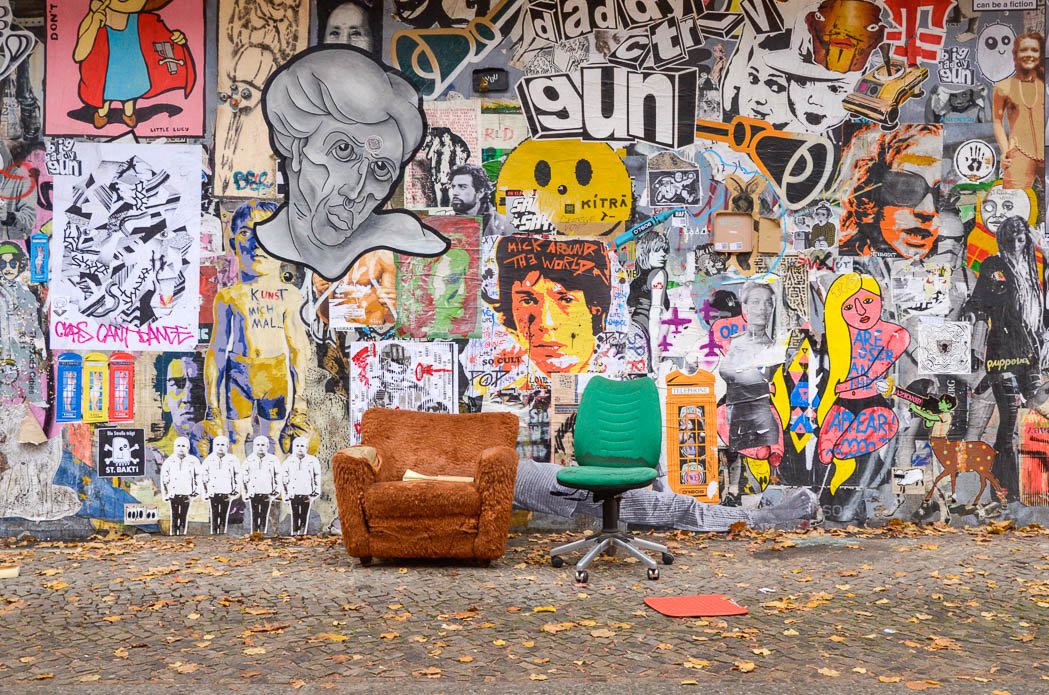
#22 Boat ride on the Spree
A nice way to discover Berlin is via boat ride on the Spree. Starting from various piers, you can experience Berlin’s attractions from a whole new perspective.
There are different tours that vary greatly in length. The journeys vary from 1 to 3 hours long.
To the 1 hour boat ride
To the 2.5 hour long boat ride
On the journey, you’ll pass different Berlin attractions. Among them, you’ll find for example the East Side Gallery, the Oberbaum Bridge in Friedrichshain-Kreuzberg, the government district, or the 30 meter high Molecule Man.
Every passenger gets a free audioguide, which shares information about the different attractions in German and other languages.
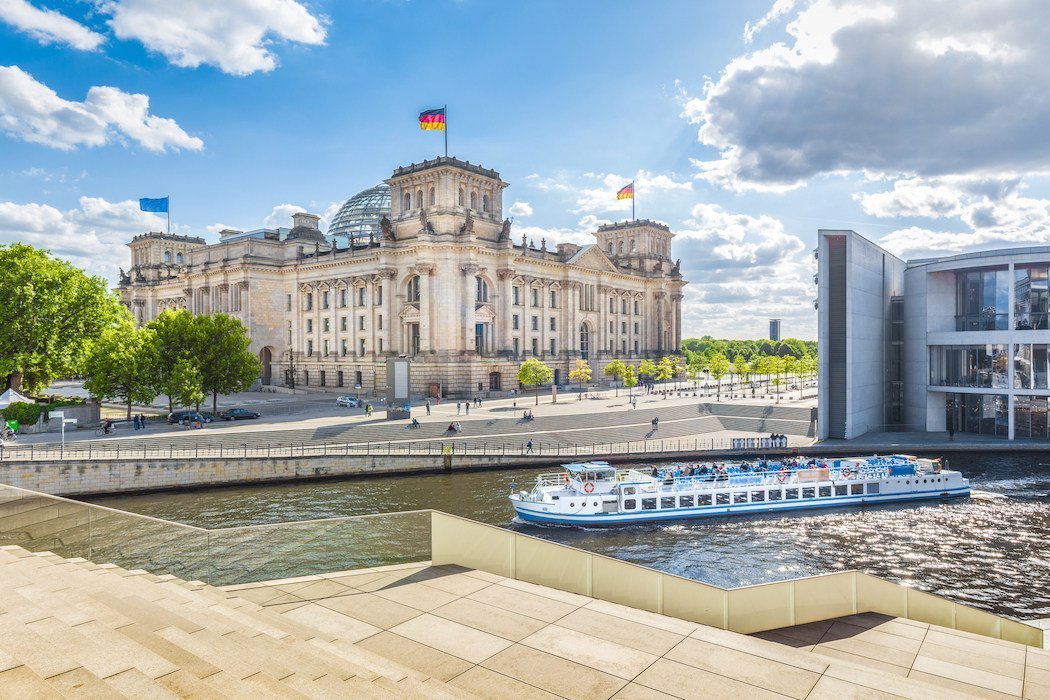
That was our 22 favorite attractions in Berlin! Do you also know Berlin and have a few more tips about the highlights of the city? Feel free to share them below or leave a comment!

